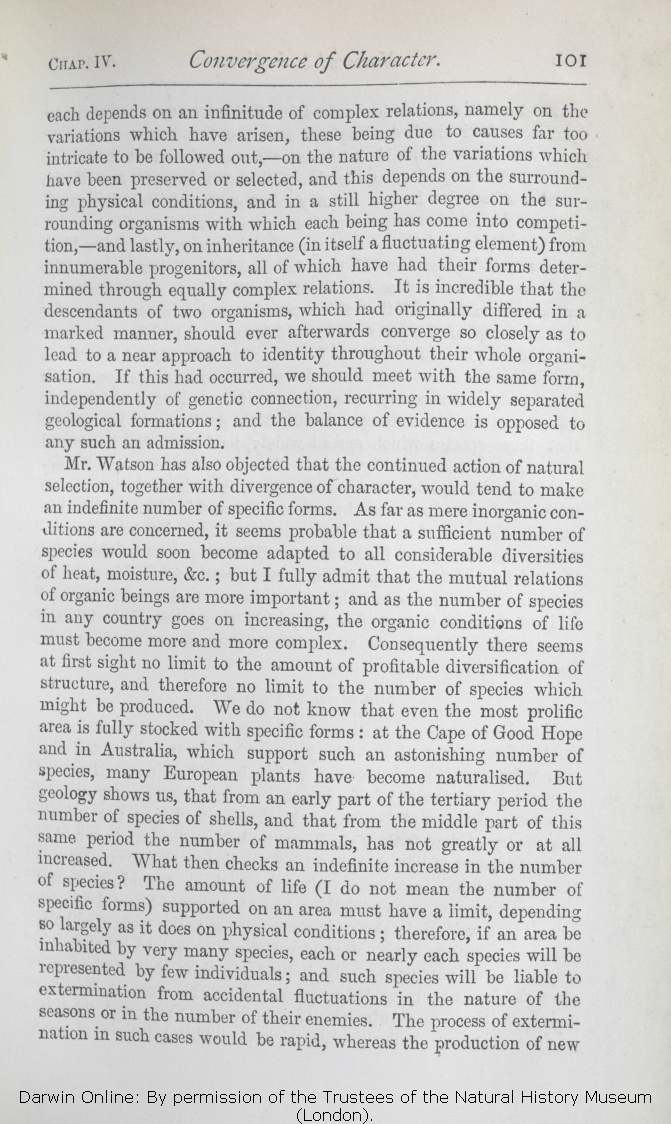|
each depends on an infinitude of complex relations, namely on the variations which have arisen, these being due to causes far too intricate to be followed out,— on the nature of the variations which have been preserved or selected, and this depends on the surrounding physical conditions, and in a still higher degree on the surrounding organisms with which each being has come into competition,— and lastly, on inheritance (in itself a fluctuating element) from innumerable progenitors, all of which have had their forms determined through equally complex relations. It is incredible that the descendants of two organisms, which had originally differed in a marked manner, should ever afterwards converge so closely as to lead to a near approach to identity throughout their whole organisation. If this had occurred, we should meet with the same form, independently of genetic connection, recurring in widely separated geological formations; and the balance of evidence is opposed to any such an admission. |
|
Mr. Watson has also objected that the continued action of natural
selection, | selection, 1872 | | selection 1861 1866 1869 |
| together with 1872 | | with 1861 1866 1869 |
| character, 1872 | | character 1861 1866 1869 |
| would 1872 | | will 1861 1866 1869 |
| any 1861 1869 1872 | any 1866 |
| country 1861 1869 1872 | | anycountry 1866 |
| must 1872 | | will 1861 | must 1866 1869 |
| ..... 1866 1869 1872 | | to be 1861 |
| that from an early part of the 1872 |
| at least within the whole immense 1861 |
| that from an early part of the long 1866 1869 |
| period 1866 1869 1872 | | period, 1861 |
| ..... 1866 1869 1872 | | that 1861 |
| and 1866 1869 1872 | | and, 1861 |
| that from the middle part of this same period the number 1866 1869 1872 |
| probably, 1861 |
| an 1872 | | any 1861 1866 1869 |
| conditions; 1866 1869 1872 | | conditions: 1861 |
| such 1872 | | these 1861 1866 1869 |
| would 1872 | | will 1861 1866 1869 |
|









